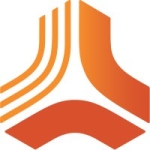What is our primary use case?
We use it for application lifecycle management.
How has it helped my organization?
We had projects in which we had the Agile part in a specific tool and the testing parts in another tool and it was very difficult to synchronize all that together for a reasonable price. Of course, you can buy tools to synchronize the different tools together, but to buy synchronization tools is very expensive. You have to handle that and if something is badly synchronized, you have to redo it by hand. So to have all that included in just one tool really makes our life easier.
Another benefit is the integration with Continuous Integration tools. Before, we had to upload all the test results either manually or automatically, but we had to write the scripts for that. With Octane that's just native, included in the package.
Finally, it consumes fewer resources than the previous tools in Quality Center. We have the same number of users but with half the servers. It's really economical from that perspective.
What is most valuable?
The most important feature is the integration of all the different features in just one tool: Agile management system, requirements management system, test management, defects management, automatic test execution. Really, if you're looking at other tools, you will never find all that integrated into just one tool with all the traceability, with all the elements in just one place. For me, that's one of the main advantages of Octane.
What needs improvement?
Globally, I don't see many major points of improvement. It's mostly plenty of little things, and it's weird to me that they are not in the product yet. They are really details, but they're annoying details. I'm sure all these features will be included in Octane in the following month or year because I talked with their R&D so I know they're working on it. But it's just awkward that some points are not there yet.
Let me just give you an example. Today, in the tool, we've got plenty of assets we can handle, like requirements, user storage, defects, tasks and so on. And to all of those elements, we can add comments. We can add comments to any asset in Octane but not to tasks. It's just impossible to understand why it's not available for tasks because it's available everywhere else.
Similarly, for attachments, you can attach files absolutely everywhere except for automated runs, which is, again, awkward. I don't understand why for this element, in particular, you cannot do it. It's little touches like that.
The Kanban boards are pretty easy to use and easy to configure. The only thing is that you cannot set a specific color for a specific card, depending on the value of the field. It's a really simple feature, very easy to implement because I implemented it in some other tools that I wrote. So I know it's easy to do. It would be really nice to have that, from a user-experience point of view, but we don't have it yet.
It's really little touches here and there that are missing.
For how long have I used the solution?
One to three years.
What do I think about the stability of the solution?
We started from the very beginning with Octane, the very first versions that were released by Micro Focus, and the quality was really high from the beginning. We haven't had any major issues. It's mostly those small enhancement requests we are asking of them. But otherwise, it's working.
What do I think about the scalability of the solution?
We haven't put scalability in place yet because of what I explained earlier. Previously, we had two servers for our Quality Center system platform and, with the same number of users, we've got just one application server with Octane. We haven't used the scalability yet.
How are customer service and technical support?
We don't have a contract directly with Micro Focus. We bought our licenses through a partner, so we are not supposed to have direct support from Micro Focus. However, I personally know people from R&D, so I get support from them directly, although it's not the official way to do it. However, all the questions I've had have been answered very quickly and they are very efficient about it. So I expect that if I had a contract directly with them it would work like that. So support has been very good.
Which solution did I use previously and why did I switch?
We were using the Quality Center Solution from HPE before and, in that solution, we had no way to handle Agile projects. That's one of the reasons we decided to move to Octane, which includes an Agile management system with the test management system and requirements management system that are available in Quality Center. Octane has more features than QC, especially for Agile methodology. It also has all the features to connect with the Continuous Integration tools, and that's very important when moving to DevOps.
Quality Center is totally obsolete today and Octane has all the new features we did need like Agile management, full web GUI, and connection to the Continuous Integration systems, as well as many others.
How was the initial setup?
The initial setup was in between: not very complex, not so simple. Medium.
What was our ROI?
We are currently in something of an "in-between" situation because we are still using the old tool and moving to the new one. We have a transition period in which we need to maintain both tools at the same time. It's a difficult period with more work because we have two tools instead of one. We need time to move from the old to the new one. We will stop Quality Center, the old tool, in one year. At that point, things will be much easier and much more cost efficient than before, for several reasons.
First of all, Octane is automatable with APIs, so we have automated everything that we can for the users: project creation, user management, and the like. With everything automated via the APIs, we don't have to invest in people to support our users. That makes it cost-efficient.
Secondly, it's cost-efficient in terms of the platform. As I said, we use half the servers compared to what we needed for QC.
Also, a project in Octane can handle everything that is needed. We don't need to have two or three tools to handle different things.
It's also efficient because we have less training for users, and there is less expense for synchronizing data between one tool and another.
Putting all that together, it's really more efficient.
What's my experience with pricing, setup cost, and licensing?
Pricing is the weakest point. It is expensive, but the tool has plenty of features. The main problem we have is that the pricing is very high compared to some other solutions.
Which other solutions did I evaluate?
We evaluated several solutions. One is called the Tuleap, which is open-source. Globally, it's a software development forge. The problem with that solution is that it's lacking test management, primarily. Then we tested another open-source solution made by a company named Henix, called Squash, which is a good solution, especially for open-source. It's just missing an integrated Agile management system. We also looked at JIRA but it does not have a test solution system and I don't like Atlassian politics very much.
What other advice do I have?
Just jump in, go ahead. Don't try to understand everything before starting. The tool is really easy to understand for users. We don't even give training to our users today, they just jump into the tool and use it and they immediately understand how to use it, so it's very cost efficient for us. We need very few people to do training. Don't hesitate to use it, whatever your development methodology is.
You have no obligation with Octane. There are plenty of features but you can use just a few of them and, after a while, when you get used to it, you can use new ones, and so on. You don't have to use everything at once and to understand everything at once to use the tool. You can just build on what you're doing and, month after month, use new features. Just go ahead and use it.
There is a free trial of the SaaS solution, so users can jump in and use the free trial to understand how the tool works, to see what it looks like, and so on.
I rate this solution at eight out of ten. I'm mostly positive about all the technical aspects. It's just loaded with features. It's very efficient. It works well, there are very few bugs. I don't rate it higher mainly because of the price.
Disclosure: I am a real user, and this review is based on my own experience and opinions.















Micro Focus supportLine is second to none. If you buy your software direct or through a reseller/partner and you have maintenance/support contract. You can always call Micro Focus supportLine direct as long as you have a serial number on-hand, you will get a quick response. No other conditions needed. Call me for any help Jacques Haddad 248-824-1770